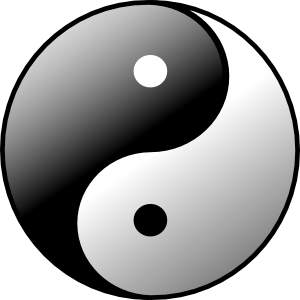Science writer Amanda Gefter describes this beautifully in these qoutes:
"The Higgs is what’s known as a scalar field, the only experimentally verified specimen of its kind. That means it has only a single value at every point in space (unlike the field that describes light, which at every point has both a size and direction)....No matter how you rotate it, it always looks the same. Just like empty space. Symmetry equals invisibility."
"The Higgs has become famous for giving elementary particles their mass, but this obscures its true meaning. After all, giving particles mass is easy—slow them down below the speed of light and, voilà, mass. The hard part is to give particles mass without breaking the primordial symmetry in the process. The Higgs field achieves this remarkable feat by taking on a nonzero value even in its lowest energy state. Crouching in every corner of empty space sit 246 gigaelectronvolts of Higgs—only we’ll never notice, because it’s the same at every point. Only a scalar field could hide in plain sight and get away with it. But elementary particles notice. Every time a particle’s mass breaks the symmetry of the universe, the Higgs is there, posing as empty space, repairing the damage. Constantly laboring in the shadows, the Higgs keeps the universe’s original symmetry intact."
The most basic conceptual principle that is fundamental to Taoist philosophical thought can be described as 'complementary opposition' . This concept is represented by the well recognized tai chi diagram which models the interdependent relationship between yin and yang. Yin and yang can represent any pair of interdependent complementary opposites such as dark and light, form and formlessness, or, asymmetry and symmetry.

In line with the tai chi diagram, the Ni family harmony style tai chi movement form is composed of two sections: a 58 movement yin section, and a 50 movement yang section. Like the dark and light fish represented in the diagram, the yin and yang sections of the form asymmetrically oppose each other in such a way that their integration allows for the emergence of something greater than the parts. What emerges is symbolized by the symmetrical form of the circle, and what underlies the integration of the parts is a greater symmetry that could be said to be formless.
As one of many possible examples consider the two postures 'double whip' and 'single whip'. Common to each of the postures is the underlying meaning 'exposition of the heavenly mystery'. An exposition is the setting forth of a theme. The 'double whip' posture serves this function for the yin section while it's opposing complement 'single whip' serves this function for the yang section. While each of these postures is composed of circular movements the 'double whip' is more contained, less expansive and turns 180 degrees from left to right. In contrast the 'single whip' is less contained, more expansive, and turns from right to left. Like the light dot contained within the dark fish the 'double whip' is said to represent 'yang contained within the yin'. Conversely, the 'single whip' represents the light fish which contains a darkened dot or 'yin within yang'. Together they complete the 360 degree circle of the tai chi diagram.
With this in mind I like to contemplate these excerpts from chapter 14 of the Tao Te Ching as translated by Hua-Ching Ni.
Look at it but you cannot see it
Because it is formless, you call it invisible
Because it is soundless, you call it inaudible
Grasp it, but it is beyond your reach
Because it is subtle, you call it intangible
.
.
If you hope to meet it, it has no part you can call front
If you hope to follow it, it has no place you can call behind
Yet it can be observed
In the constant regularity of the universe
The practice of tai chi, through it's symmetry breaking ( i.e., the creation of form ), and symmetry making (i.e., the transcendence of form), can serve as a method for complementing a modern scientific cognitive understanding of these concepts with an experiential exploration and understanding of these concepts .
Zhaungzi offers advice on how one might navigate the asymmetries that are continually unfolding as potential paths we might walk.
‘A dao is created as we walk it;’ &
‘Therefore, the Sage brings all into harmony through assertion and denial but rests it upon the balance of heaven: this is called “Walking a Double Path.’This is accomplished by
‘Allowing Both Alternatives to Proceed’ &
‘remaining at rest at the center of the spontaneous Potter’s Wheel of Nature’ - & finally
‘Thus the Sage sees by the glimmer of chaos and doubt. He does not affirm of anything: “this is it”; his affirmation is lodged in ordinary practice. This is to view things in the light.Compare this again with another paragraph from Gefter:
"In spite of the way quantum fluctuations are typically described, what sits “out there” in the world is not some preexisting reality wiggling around. Experiment has consistently proven that what sits “out there” isn’t sitting at all, but waiting. Unborn. Quantum fluctuations are not existential descriptions but conditional ones—they are not a reflection of what is, but of what could be, should an observer choose to make a particular measurement. It’s as if the observer’s ability to measure determines what exists. Ontology recapitulates epistemology. The uncertainty of nature is an uncertainty of observation. "
"Could it be that something is just what nothing looks like from the inside? If so, our discomfort with nothingness may have been hinting at something profound: It is our human nature that recoils at the notion of nothing, and yet it may also be our limited, human perspective that ultimately solves the paradox. "